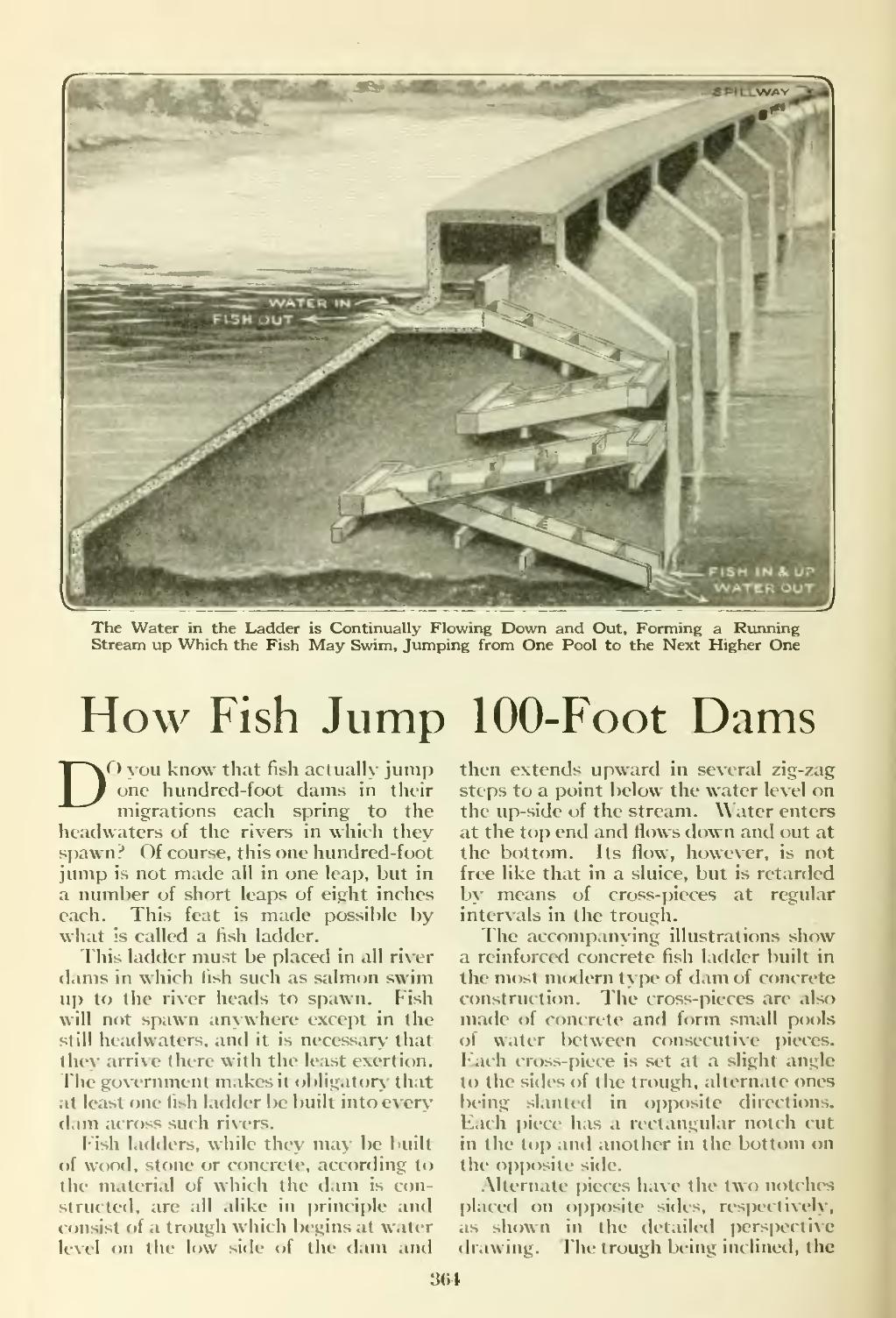�The Water in the Ladder is Continually Flowing Down and Out, Forming a Running Stream up Which the Fish May Swim, Jumping from One Pool to the Next Higher One
��How Fish Jump 100-Foot Dams
��Do you know that fish actually jump one hundred-foot dams in their migrations each spring to the headwaters of the rivers in which they spawn? Of course, this one hundred-foot jump is not made all in one leap, but in a number of short leaps of eight inches each. This feat is made possible by what is called a fish ladder.
This ladder must be placed in all river dams in which fish such as salmon swim up to the river heads to spawn. Fish will not spawn anywhere except in the still headwaters, and it is necessary that Ihcy arrive there with the least exertion. The government makes it obligatory that at least one fish ladder be built into every dam across such rivers.
F"ish ladders, while they may be built of wood, stone or concrete, according to the material of which the dam is con- structed, are all alike in ])rinciple and consist of a trough which begins at water level on the low side of the dam ami
��then extends upward in several zig-zag steps to a point below the water level on the up-side of the stream. Water enters at the top end and flows down and out at the bottom. Its flow, however, is not free like that in a sluice, but is retarded b\' means of cross-pieces at regular intervals in the trough.
The accompanying illustrations show a reinforced concrete fish ladder built in the most modern t\pe of dam of concrete construction. The cross-pieces are also made of concrete and form small pools of water between consccuti\e ijieces. Kach cross-i)iece is set at a slight angle to the sides of the trough, alternate ones being slanted in opposite directions. Each piece has a rectangular notch cut in the top and another in the bottom on the opposite side.
Alternate [)icces ha\e the two notches l^laced on opposite sides, respect i\Tly, as shown in the detailed iierspective drawing. The trough being inclined, the
��304
�� �

